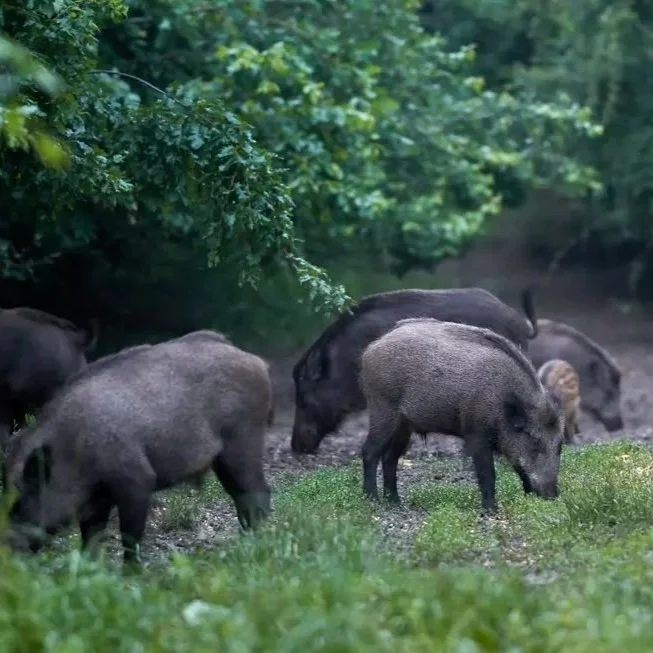This week, more than two dozen industry leaders representing the rice farmer, merchant, and milling sectors traveled here to meet with Washington trade experts, hear policy updates, and advocate for leveling the global playing field on trade.
Read MoreThe Chinese Communist Party has allowed poisonous fentanyl to pour into the United States and encouraged Chinese businesses to lie, cheat and steal in American marketplaces.
Louisiana crawfish farmers, for example, have struggled to compete with Chinese producers that ignore the environmental and safety regulations that American producers must follow. Under President Biden, regulators only inspected 1% of all seafood imports. In turn, China could sell its crawfish—which are often loaded with unsafe levels of antibiotics—at a much cheaper price than the higher-quality American product.
Read MoreRepresentatives Mike Ezell (MS-04), Julia Letlow (LA-05), and Troy Carter (LA-02) today introduced the Safer Shrimp Imports Act, a bipartisan bill aimed at tightening federal inspection standards for imported shrimp and protecting American consumers and domestic seafood producers.
Imported shrimp accounts for roughly 90% of the shrimp consumed in the United States, much of which comes from countries with weak food safety standards and inadequate oversight of harmful contaminants such as antibiotics, pesticides, and bacteria.
USDA Farm Service Agency (FSA) reminds you to report prevented planted and failed acres in order to establish or retain FSA program eligibility for some programs.
You should report crop acreage you intended to plant, but due to natural disaster, were prevented from planting. Prevented planting acreage must be reported on form CCC-576, Notice of Loss, no later than 15 calendar days after the final planting date as established by FSA and the Risk Management Agency (RMA).
Read MoreNitrogen is one of the essential elements on which life depends. However, while nitrogen is abundant in the atmosphere as nitrogen gas (N₂), this form is largely inert and unusable by most living organisms.
To be biologically useful, nitrogen must be converted into ammonia (NH₃), a form that living systems can incorporate into vital biomolecules like DNA, RNA, and proteins.
Read MoreDr. Steve Linscombe spent more than three decades as a rice breeder and he and his team are responsible for some of the most successful and sought after rice varieties throughout the world. Now Steve co-hosts a podcast (among other things) but there’s nobody better suited to lead a deep dive into rice seed production.
Read MoreThe 2025/26 U.S. corn outlook is for record supplies and total use, and higher ending stocks. The corn crop is projected at 15.8 billion bushels, up 6 percent from a year ago on increases to both area and yield. Planted area of 95.3 million acres if realized would be the highest in over a decade. The yield projection of 181.0 bushels per acre is based on a weather-adjusted trend assuming normal planting progress and summer growing season weather.
Read MoreThe year 1965 gave us the song “Catch Us if You Can.” Reference to those lyrics fits the scenario of a market continuing higher and higher. Maybe just the mention of it will seed a price jump in the market.
Yet, for now, we must be content with a continuation of a market just backing and filling, headed nowhere and going nowhere.
Read MoreAccording to the National Agricultural Statistics Service in Louisiana, there were 2.0 days suitable for fieldwork for the week ending Sunday, May 11, 2025. Topsoil moisture supplies were 0 percent very short, 6 percent short, 49 percent adequate, and 45 percent surplus. Subsoil moisture supplies were 0 percent very short, 2 percent short, 59 percent adequate, and 39 percent surplus.
Read MoreAs we approach mid-May, most rice growers have their 2025 rice crop in the ground. Overall, reports have this year’s crop looking fairly decent but inclement weather, including severe storms and flooding in some areas of the south over the last few weeks, continues to cause delays in getting the last few acres in the ground.
Read MoreOn the heels of a historic trade win, a coalition representing four American food industries praised President Trump's "America First" leadership, while calling for targeted tariffs on imported honey, catfish, crawfish, and shrimp to counter years of predatory trade practices.
Read MoreAl Scramuzza, the flamboyant seafood pioneer known as the “Crawfish King” who helped make the mudbug a staple of Louisiana cuisine, died Sunday at his home in Metairie after a brief illness. He was 97.
Scramuzza was the founder of Seafood City, a sprawling seafood market that once took up an entire city block on North Broad Street in Mid-City and became one of the largest seafood operations in the Gulf South.
Read MoreMark Shirley, a Louisiana Sea Grant and LSU AgCenter marine extension agent, retired in March after 41 years of service. He is known for many things during his career, but most notably, he developed Marsh Maneuvers — established in 1989 as an immersive education program for 4-H students to experience Louisiana's coast. The program motivates students toward studying coastal ecology and biological sciences.
Read MoreTo say that Louisiana has a "slight problem" with wild hogs would be like saying that Willie Nelson has a slight passion for marijuana.
In a report a few years back from the LSU Ag Center, it was estimated that feral hogs are doing $91.1 million in damage to Louisiana every year.
Read MoreU.S. farmers are expected to produce 1.38 billion bushels of winter wheat this year, according to the Crop Production report released today by USDA’s National Agricultural Statistics Service (NASS). In NASS’s first winter wheat production forecast for 2025, production is expected to increase 2% from 2024. As of May 1, the U.S. yield is expected to average 53.7 bushels per acre, up 2.0 bushels from last year’s average of 51.7 bushels per acre.
Read More














